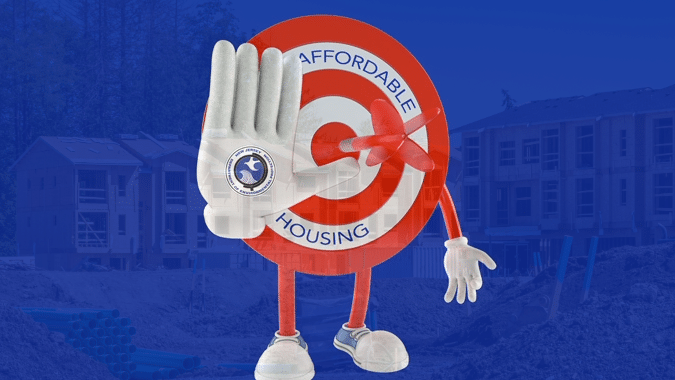In his State of the State address this week, Gov. Phil Murphy made a strong push for the reform of zoning and permitting rules to fulfill the mission of a broad affordable housing law he signed last year.
But despite the governor’s call for easing ‘outdated restrictions,’ the land use rules proposed by his own Department of Environmental Protection would stand in the way of new housing construction even more than local ordinances in many areas, according to NJBIA Deputy Chief Government Affairs Officer Ray Cantor.
“We appreciate Gov. Murphy’s call for reform of our local government's zoning and planning process so that we can begin to build the affordable housing he seeks, and, in many communities, we have long needed,” Cantor said.
“We would ask the governor, however, to also look at his own house because the DEP's proposed land use rules will take the wind out of any efforts to build affordable housing in New Jersey.
“These extreme rules need to be pulled back and they must be changed in order to recognize any affordable housing priorities.”
DEP’s proposed Resilient Environments and Landscapes (REAL) rules establish expanded “inundation risk zones (IRZs),” based on dated and low-confidence science, which will require the building or rebuilding of structures 5.1 feet higher than existing flood elevation standards.
With that and other extreme provisions of the rule, affordable housing in urban, suburban and rural municipalities will be much more difficult, and in some cases impossible, to establish even in the distant vicinity of tidal waters.
“While there are nuances to these very dense DEP rules, in too many cases they effectively create ‘no build’ areas,” Cantor said. “They extend flood mapping into areas that have never flooded and likely will never flood. They make the development process more complicated, time- consuming, and less predictable, subjecting development in many areas to increased and costly regulatory requirements.
“As such, the DEP’s extreme rule making will act in contrast to the state’s affordable housing policies. We cannot have a prosperous society and a robust economy if the residents of the state cannot afford to live here.”
Other extreme conditions of the rule include the allowance of only 3% of impervious cover on new construction in an IRZ.
Other changes to stormwater rules in the 1,057-page DEP document will impede any urban development or redevelopment, Cantor said.
“This proposal changes the stormwater requirements so that a redevelopment project in an urban area would need to meet the same stormwater requirements as if it were being built in a greenfield in a rural area,” Cantor said.
Last year, Gov. Murphy signed a law that standardizes affordable housing obligations for municipalities throughout the state in an effort to build more housing units.
In October, the state Department of Community Affairs released calculations of how many low- and moderate-income housing units municipalities must construct or plan for by 2035.
Some of the state’s urban locations that will find themselves greatly impacted by IRZs include Jersey City, Asbury Park, Atlantic City and Camden.
Those four cities, alone, are obligated to provide a combined 6,134 units of affordable housing, according to the DCA calculations.
Numerous inland towns near rivers and bays would also have expanded impacted acreage under the IRZ restrictions.
“We recognize that affordable housing perhaps should not be built in areas subject to frequent flooding,” Cantor said. “But these proposed rules needlessly place thousands of acres of developable and prime real estate out of bounds due to their extreme projections and provisions.”
The DEP is basing its 5.1-foot flood elevation standard on the notion that seas will rise 5 feet by 2100 – which was a low-confidence data point in a 2019 study.
The DEP is expected to finalize their REAL rules in the spring.




